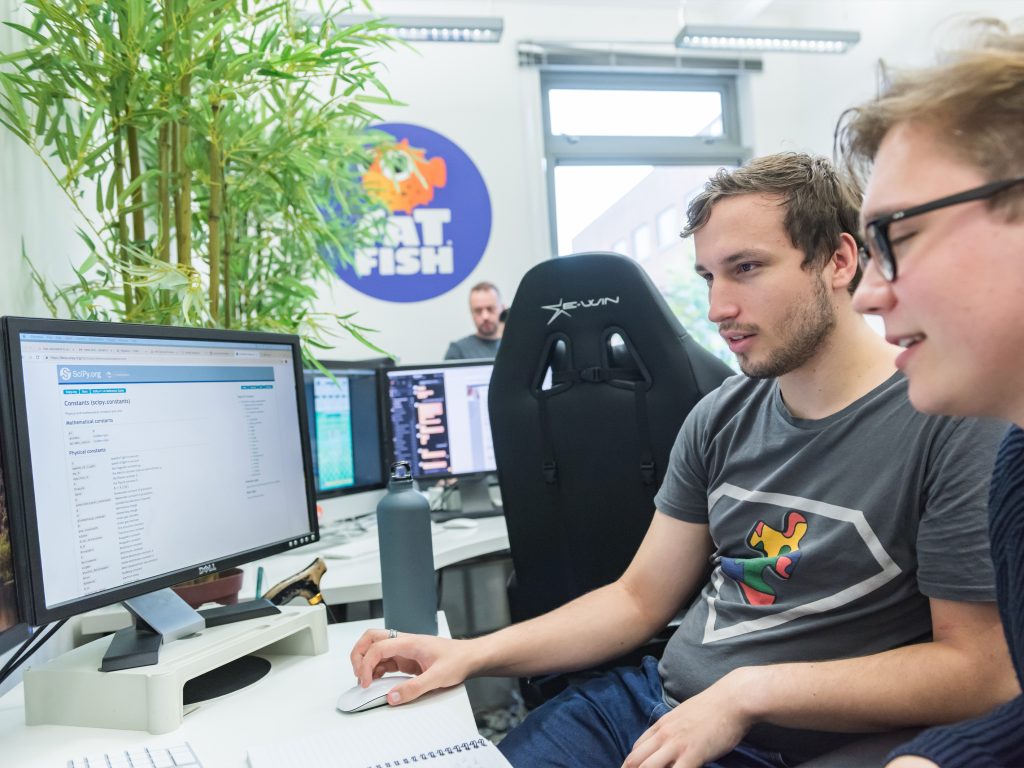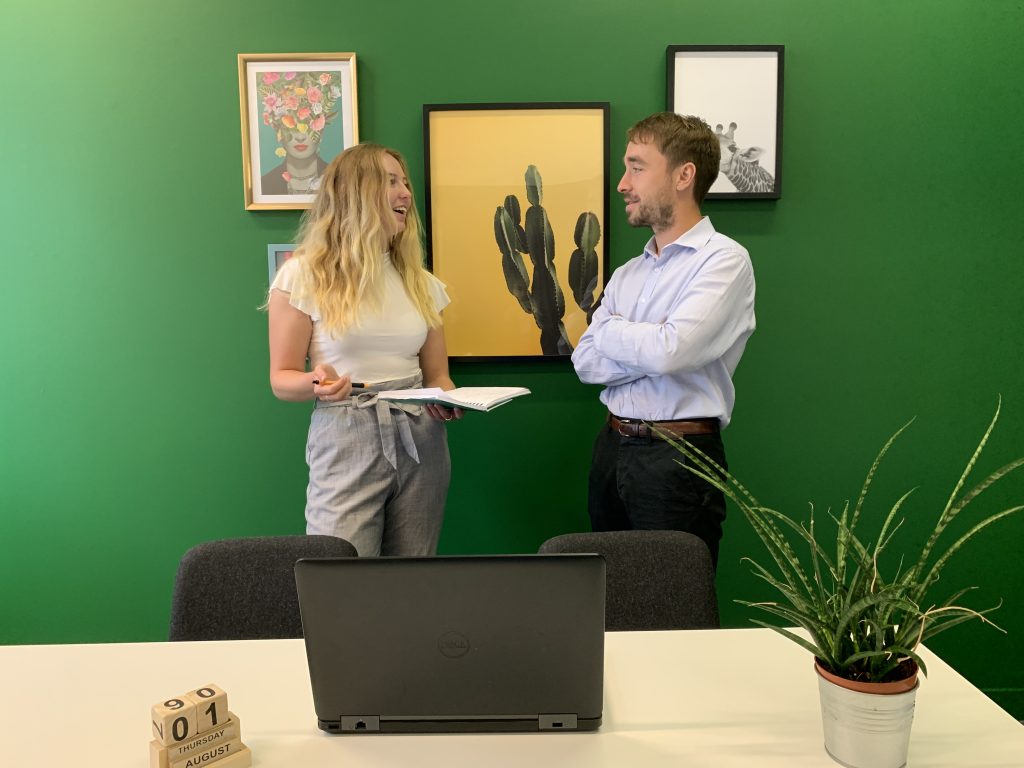Share
Workplace interior design says a lot about your business and its culture. Driven by the hybrid and remote work revolution, companies are re-evaluating the look and feel of their office space and trying to understand what helps to make a great environment to work. In this article we explore some of the current trends.
“One of the unique hallmarks of Sussex Innovation , ever since we first opened, is that we’re happy for our tenants to make the space their own,” says Simon Chuter, Sussex Innovation’s Head of Centres. “Initially that was because lots of our members work in science or technology and needed to be able to bring in workbenches or a laboratory setup. More recently we’ve realized that it’s attractive for any small business to be able to put their own stamp on their space.”
But seeing as most business owners don’t double as interior designers, what are the quickest and most effective ways of making your office feel like home? Here are three strategies that can help to create a unique feel to your space – and have an impact on your work culture.
From open plan to cubicle and back again
The history of office design is a constant push and pull between creating a private or public space. For the first half of the 20th century, most workplaces followed a similar model: upper management in private offices, and employees at rows of desks or workstations.
In the 1960s, the ‘Action Office’ system developed by designer furniture company Herman Miller invented the cubicle – a radical new concept that would give employees their own sense of privacy and personal space at work. It didn’t take long for the cubicle to itself become a symbol of dehumanization at work, and during the dotcom boom of the 80s and 90s, a backlash led by Silicon Valley’s start-ups ushered in a return to open plan offices with shared social space.
The pendulum continues to swing between each philosophy because both come with their own advantages and challenges. Very few people work in the same way 24/7 – sometimes we need quiet, focused time without distractions, and other times we need conversation and collaboration to stimulate ideas and creativity.
Most forward-thinking interior designers now seek to build ‘hybrid’ spaces that encourage teams to move between both work modes throughout the day, as the situation demands. Ironically, this is closer to the original intention of the Action Office concept; a modular approach to office design that could be used to create different pockets of space and encourage flexibility.

Plant life
For many years, greenery in the office environment was a relative rarity, considered too difficult and expensive to maintain. But more recently, a series of psychological studies have revealed striking conclusions about the benefits of working around plant life. The presence of plants has been linked to the body producing less stress hormones, which in turn has a knock-on effect on everything from increased concentration and focus to reduced absence from illness.
A further health benefit comes from the improved air quality in enclosed spaces that have houseplants cleaning the environment of pollutants that can cause headaches, fatigue and allergies. A Cardiff University study offers the most conclusive evidence of the commercial impact these
factors can have, showing that offices landscaped with plants experienced a boost of up to 15% in productivity.
Plants can also be used to complement the hybrid office layouts described above, acting as natural buffers to reduce noise pollution and creating private space. Finally, a more aesthetically pleasing environment is likely to make the workplace a more appealing place for employees to spend their time.

Colour psychology
Colour plays a surprisingly big role in creativity, productivity and general mood – and much like the layout of your office furniture, it pays to design a mixed-use space that doesn’t lean too heavily on any one colour. Consider how different areas of your workplace may be used, and emphasise different colours accordingly:
· White is by far the most common workplace paint colour, helping the space to look larger and more ordered. However, large expanses of white can begin to feel very sterile, and has been shown to drain people’s energy and creativity.
· Reds and yellows can stimulate energy, motivation and positivity. Too much of either is likely to induce stress, anxiety and agitation though – so use them sparingly as accent colours throughout your space, or to foster warm emotions as you enter the office.
· Green, particularly brighter shades, is a good choice for creative space, but can have a negative effect on concentration if it is too dominant. You might want to use it in a meeting area that is set aside for collaborating and coming up with new ideas.
· Blue has a calming effect and can help with productive ‘deep work’. A neutral blue can be an effective choice for subtly changing someone’s mood and encouraging intellectual thought when they sit down at a workstation or pod.
· Grey also puts people in a professional frame of mind, and can aid focus. Be careful to mix up different shades of grey to prevent your space from feeling too oppressive and dull.
· Black helps to bring a more luxurious feeling to a space, but absorbs natural light when used too much. It makes a good accent colour in areas designed for taking a break.
If you’re looking for a serviced office to make your own, visit www.sussexinnovation.co.uk/find-your-space for more information about joining the community of tenants at Sussex Innovation.



 01273 704400
01273 704400